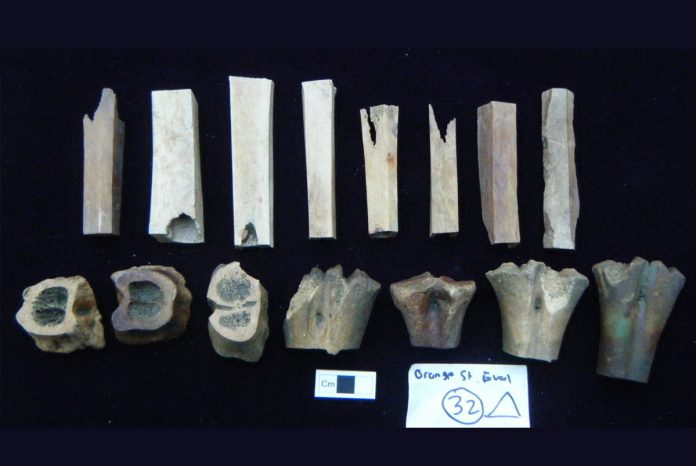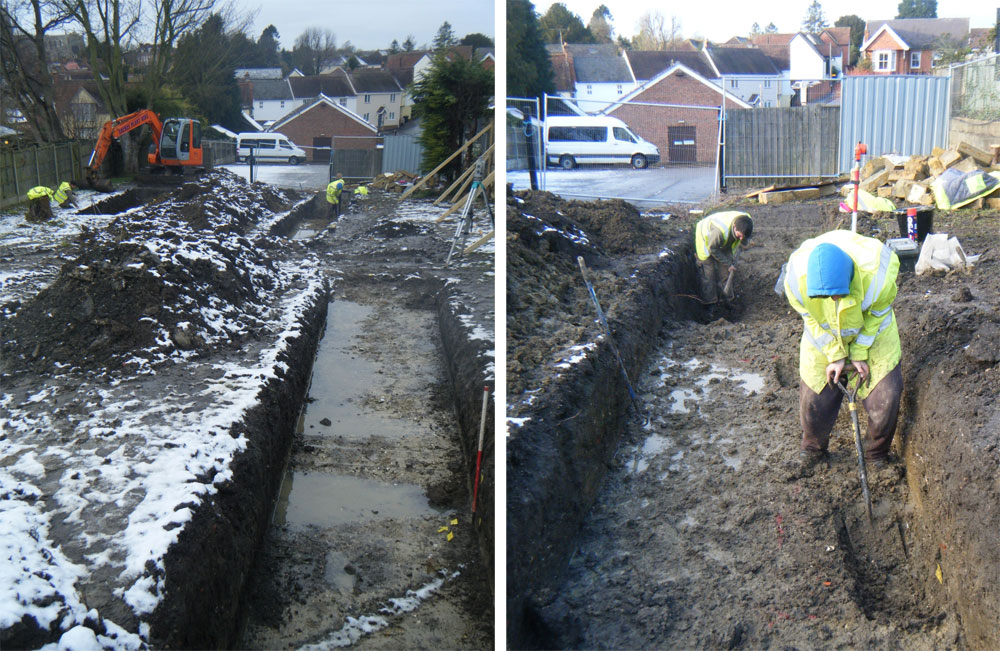During the evaluation, fragments of 15th- to 16th-century pottery were recovered,along with pieces of medieval glazed floor-tiles, and an unusually large assemblage of fragments of bone-working waste.
Thaxted is considered to be of major historical importance, as it includes historic buildings and street layout.
The village of Thaxted has 149 Listed Buildings, including the great parish church and the guild hall, and the surviving later medieval town street layout includes the market-place. The bone-working waste items derive from the town’s thriving medieval/early modern cutlery industry. The industry would have involved cutlers and associated craftsmen, manufacturing and trade, trade guilds and outlets, in the retail space under the two guild halls, stalls in the market-place, the fair, and houses with shops. The cutlery industry brought prosperity to the town and its impact can still be seen here, for example, probably in the building of the church.
Thaxted was a large village by the time of the Domesday survey. The Essex Record Office provides a history of Thaxted on SEAX (Essex Archives Online): ‘… It is, however, as a medieval town that Thaxted is renowned. The area of the town was owned by a number of manors, the largest being Thaxted Manor which was based within the town itself. Thaxted was granted a market in 1205, but it probably had already had a market function before that date.
In the 14th century, the documents record rapid expansion in the town, when it became the centre of a thriving cutlery industry. In the Poll Tax returns of 1393 there were 79 cutlers, 11 smiths, 4 sheathers and 2 goldsmiths, which means that over a third of the adult male population was employed in the cutlery and associated trades. There is no obvious reason why the cutlers chose Thaxted, although it is known that the Manor of Thaxted encouraged the industry by introducing cheaper rents. The earliest references to the industry in Thaxted are late 13th century. The evidence of the 14th-century surveys is that the industry attracted a large number of immigrants to the town. The 14th-century and later expansion, contrary to national economic trends, was due to the cutlers alone. The industry appears to have died out by the 16th century … [The charter of 1556 refers to ‘greate ruine and decay by reason of greate povertie and necessyti’] …’ – at http://unlockingessex.essexcc.gov.uk/uep/content_page.asp?content_page_id=133&content_parents=48,94
Cutlery manufacture required water and so the cutlers would have settled by the stream which passed through the middle of the town. Apparently, Middle Row seems to have largely consisted of cutlers’ premises. Bone-working waste has been collected before in Thaxted, ie from archaeological sites on Town Street and Weaverhead Lane. The bone-working waste which we have collected consists of mostly cattle metapodials, with the ends cut off, and which have been shaped and finished. Some of the fragments show saw-marks. The bone would have been worked to make cutlery with bone handles and iron blades.
The site was supervised by Trust archaeologist Adam Wightman, who is also the faunal remains specialist.

Source: Colchester Archaeology Trust


